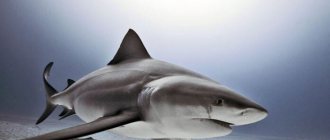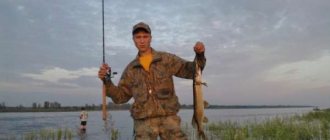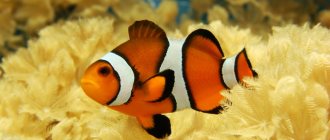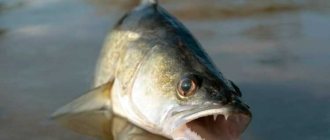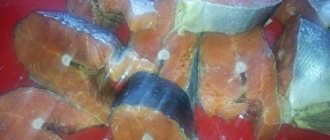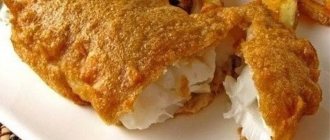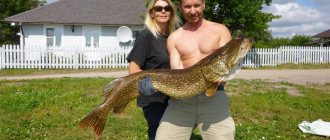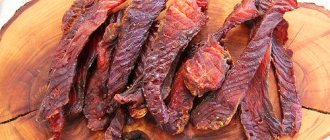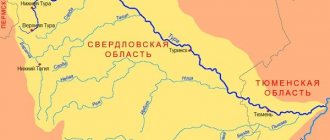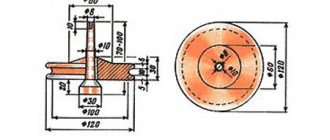Hello, dear fishermen! In this article, the fishing site ryba4ok.ru will tell you in what winter weather the bite will be good, and in what weather the bite will be bad or completely absent. The information that will be presented below is based on many years of experience of winter fishing enthusiasts, who for many years kept diaries, recording weather conditions and biting activity.
By comparing weather factors and the activity of underwater inhabitants, you can now quite accurately determine favorable weather for winter fishing. And the activity of fish in winter can be affected by such factors as:
- Direction of the wind;
- pressure;
- temperature;
- precipitation;
- cloudiness;
- water level;
- the weather itself.
Let's look at each of these points in detail and find out what the fish needs to actively bite. If all of these factors are favorable for fishing, then the bite will be 100%. Accordingly, the more unfavorable factors, the worse the bite will be.
Which wind bites better in winter?
Wind has a direct impact on fish activity both in winter and summer. Based on the direction of the wind, experienced fishermen can already draw certain conclusions about fishing. If you know how this or that wind affects the activity of fish in winter, you can predict your catch.
In order to understand whether it is worth going fishing, first of all you need to know in what wind the fish do not bite in winter. According to the observations of experienced fishermen, a bad wind for fishing is as follows:
- The east wind always has a negative impact on the bite. What this is connected with is not known for certain, but all the fishermen’s diaries note a decrease in fish activity precisely during the eastern wind.
also usually does not promise a good bite, but when the south wind blows, an active bite is most often observed.
North wind- A sharp change in wind direction usually brings with it changes in pressure, and as you know, pressure is one of the most important factors affecting the bite.
- Wind in the direction of the current leads to a decrease in fish activity in winter. Anglers have long noticed that when the wind blows against the current, the bite is excellent. If the wind is directed along the current, the bite is sluggish.
- Strong winds not only make fishing uncomfortable, but can also lead to loss of bite. This is due to the fact that usually, increased wind is caused by a sharp jump in pressure, which has a very negative effect on the bite.
The most favorable wind for winter fishing is western or southern. Such winds usually bring slight warming, the fish feel very comfortable and actively respond to the offered bait.
At what pressure does it bite better in winter?
Another significant factor that can determine the outcome of fishing is atmospheric pressure. Pressure has a strong influence on the activity of fish at any time of the year and this is due to the physiological structure of underwater inhabitants. As you know, fish have an organ called an air bladder. This bubble adapts to the current pressure so that the fish can comfortably stay at a certain depth so that it can easily change the layer of water in which it is located.
When the atmospheric pressure changes, the work of the air bubble is disrupted and the fish can no longer normally control its body and calmly move between layers of water. For fish this is discomfort and stress, so the last thing they think about is nutrition during pressure changes. After a sharp jump in pressure, the fish may recover for 2-3 days, during which the bite will be absent or, at best, very weak.
Favorable pressure for fishing is stable pressure. It doesn't matter if it's low, high or medium. Stable pressure means that the bubble is tuned like a clock and no fish discomfort will interfere with fishing. Stable pressure must last for at least 2-3 days for the biting activity to gain momentum.
A smooth decrease in pressure is very favorable for winter fishing. During such periods, almost all white fish are caught very well. And with a slow increase in pressure, the predator becomes active.
It is worth noting that usually either predatory fish or peaceful ones bite well. When a predator is active, peaceful fish practically do not bite. When a peaceful fish actively bites, it means the predator’s bite will most likely be weak.
Wintering pits and predators under the ice
Winter cold is the time when the growth of aquatic vegetation and plankton stops. Fish, whose food supply is becoming scarce, reduce their vital activity, gather in schools, and look for suitable places for wintering. Individuals of the same age and size gather in wintering pits. This makes it easier for them to endure the cold, clustering tightly in flocks. Mucus abundantly secreted on the surface of the scales helps to resist the cold and minimize energy costs. Most likely, it is this that scares away predators; the population of fish waiting out the cold remains untouched throughout the winter.
This behavior is typical for heat-loving bream, carp, and tench. The fat reserves stored in the summer allow you not to worry about nutrition. The fish spend about three months inactive in wintering pits, so that the individuals closest to the bottom develop bedsores on their bellies.
The influence of temperature on fish biting in winter
Temperature is also a fairly influential factor on fish activity. She, like a person, is uncomfortable when it is excessively cold or hot. She is cold in winter, so she becomes more active on thaw days. If warm winter weather persists for several days, there may even be a significant surge in activity.
In general, it has long been noted that the lower the water temperature in the reservoir, the worse the bite will be. And the water temperature directly depends on the air temperature. Cold water will be an ideal condition only for the activity of burbot. Everyone knows his love for frost and bad weather; the worse the weather for the fisherman, the better the burbot bites.
Fish activity increases especially noticeably when warming occurs after prolonged frosts. Underwater inhabitants miss the warmth and, if suddenly it does arrive, they will actively feed, delighting fishermen with their bites.
Despite the rule “The colder it is, the worse the bite,” literally all fishermen confirm the fact that when bitter frosts set in outside at -30°, bream, and sometimes other peaceful fish, begin to bite very actively. On such days, all experienced fishermen switch to fishing for bream, although sitting on the ice in such frost is not very comfortable.
Wintering options
As mentioned above, fish adapt to severe cold and sub-ice lifestyle in different ways:
- Complete passivity . The brightest representative of this group is the recognized champion in survival, crucian carp. This fish simply buries itself in the silt and freezes until spring, not feeding at all.
- Wintering pits . These are deep-sea areas where heat-loving fish, mainly representatives of the carp family (actually carp, bream, silver bream, carp, and so on), go for the winter.
- Spawning . Most freshwater fish that live in freshwater bodies of our country spawn in the spring, less often in the summer, and representatives of the salmon family postpone this action until the fall. But there is one fish that is not subject to the general “fashion” - the burbot arranges mating games precisely at this harsh time, in ice-covered reservoirs.
- Migration . This feature is characteristic of a number of representatives of the salmon family, however, they do not go to the sea for the winter, but in general for life, returning to their native rivers only for spawning.
- Keeping active . Many predators continue to patrol the reservoir, quite actively feeding on small things that have not gone into hibernation: their own offspring, bleak, roach, ruff, goby, and so on.
The influence of precipitation on the bite
Winter precipitation is not such a simple topic. In this matter, not everything is so clear. The only thing that is clear is that by winter precipitation we mean snow and we need to find out how snow affects the bite in winter.
In general, snowfall has a negative impact on the bite, and may even stop the bite altogether. Perhaps this is due to a change in the illumination of the reservoir, because the snow, lying on the ice, blocks the water from the sun. Perhaps the fallen snow has some other effect, but the activity of the underwater world, while it is snowing, noticeably decreases.
But sometimes it snows intermittently. That is, it starts to fall, then slows down and stops. It seems that everything is over, there will be no snow, but after a while the snowfall repeats again. In this kind of weather, on the contrary, the bite is excellent while it’s snowing. As soon as the snow stops, the bite subsides, the snow falls again, and the bite begins. Moreover, this is most noticeable when fishing for roach.
Who spends the winter how?
Look out the window.
All the glass is painted with white patterns - the frost painted it that way. It's cold outside. Everything around is covered with snow - the ground and the roofs of houses, even on the trees - there is snow. January is the coldest month, the middle of winter. Ponds and rivers are frozen, fields and forests are covered with snow. The nights are long. At eight o'clock in the morning it is still dark, by nine the sun only rises. And the days in winter are very short. You can’t get around to going outside to run and play, and suddenly it’s dark again. Look into the yard on a winter morning. Sparrows are jumping in the snow; from the cold they have become ruffled, fluffed up, and look like balls. They jump, they pick up crumbs . It’s also important that crows waddle around, jackdaws scurry between them - just looking to see what they can profit from. They bring out a bowl of food for the dog, they just put it down, and the jackdaws and crows are right there: the dogs are jumping around, trying to -grab a piece right under your nose. The dog can’t stand it, he rushes after the bird, and the others are already climbing into the bowl
Some will grab the bread, some a bone, and fly away. In the village in winter, near the house, not only these birds can be seen. Tits, buntings, and even wary magpies fly here. They are hungry in the forest in winter, so they fly closer to human habitation to feed. Forest animals climbed into warm holes. , foxes go hunting, and in the fall the bear lies down in a den and sleeps until spring. In winter, everyone tries to hide from the frost, from the cold, icy wind, and everyone has adapted to winter in their own way.
The influence of cloudiness on winter fish activity
You can also determine the activity of fish by the presence of clouds in the sky, or by their absence. So, in cloudy weather, but without severe frost and wind, or even during a thaw, biting activity increases in both peaceful and predatory fish.
In clear weather with a good frost of -25 ° C, activity also increases. The main thing is that the pressure is stable for at least the last 2 days, and even better if it stays at around 750 mm Hg. Art.
Cloudy weather during a thaw after prolonged frosts can be a sign of a very good bite; in such weather you should definitely try your luck at fishing.
The influence of water level on winter bite
Changes in the water level in a pond are one of the most important factors affecting the bite. For fish, a change in the water level in a reservoir is a signal that global changes are taking place and, depending on whether the water level increases or decreases in winter, the bite will depend.
Decrease in water level in winter. Such an event is certainly a negative factor for biting and a wake-up call for fish. The drop in water level itself triggers the instinct of self-preservation among underwater inhabitants, because without water they cannot survive. If the water level drops, the activity of the fish decreases; if this drop is sharp and the significant bite stops altogether, the fish occupies the deepest parts of the reservoir and waits for the situation to improve.
Rising water level. This situation does not pose a threat to the life of the underwater world, so activity does not deteriorate. Most often, rising water levels lead to increased activity and a better bite. But when the water level in a reservoir rises, fish may leave their usual sites and habitats, so it may simply be difficult for an angler to find them during such periods. If the point where the fish feeds is found, a good bite is guaranteed.
Changes in water levels can occur for natural reasons - snow melting during thaws, rains, etc. or due to human activity - artificial release or replenishment of water levels in reservoirs, ponds or canals. It is worth noting that artificially changing the water level in a reservoir, which is carried out regularly, may have less impact on the activity of fish, since this has already become the norm for it. But still, of course, the fish reacts to such changes quite sharply.
It is also worth noting that the larger the reservoir, the more noticeably the fish reacts to changes in water level. Large bodies of water are always more stable, and if the water level in them changes, especially drops, then the fish begins to panic and during such periods it may have absolutely no time for feeding.
Text of the book “Winter Fishing. Features of fishing. Tackle. Technique"
Konstantin Storozhev Winter fishing. Features of fishing. Tackle. Technique
© DepositPhotos.com / rogkov62, cover, 2015
© Book Club “Family Leisure Club”, edition in Russian, 2015
© Book Club “Family Leisure Club”, artistic design, 2015
© Book Club “Family Leisure Club” LLC, Belgorod, 2015
* * *
Introduction
Winter fishing has not only its own characteristics, but also a number of advantages compared to summer fishing. One of them is that the fisherman is closer to the subject of his hunt: only a layer of ice separates them. In addition, in winter you can get to places that you cannot get to in summer.
Winter fishing requires from a person not only the necessary equipment, but also patience and perseverance. Yes, perhaps even more than in the warm summer, you need knowledge, skill and, of course, passion. Anyone who once fell in love with fishing, realized that this is an excellent option for relaxation and strengthening physical and spiritual strength, with all his soul he rushes to the river, lake, reservoir both in winter and in summer. There may be fewer trophies, but there will be just as much pleasure and benefit, if not more.
Many amateurs and novice fishermen believe that winter fishing is only accessible to particularly seasoned people, but this opinion is wrong. And it is widespread mainly among urban residents, who are accustomed to spending most of their time in warm apartments and offices. In fact, light and loose clothing, especially fur or cotton wool, and loose felt boots with special galoshes provide warmth and well-being even in extreme cold. Well, those who are freer financially can afford to buy special clothes and shoes, which are designed to provide not only warmth, but also maximum comfort.
As for health, being in clean, frosty air improves health and is not harmful even for people suffering from cardiovascular and pulmonary diseases. And these are not empty words, but supported by practice. Moreover, frosty air is especially recommended, for example, for asthmatics.
So winter fishing is not only an exciting activity, a wonderful leisure activity, but also a step towards health.
Part 1. From the first to the last ice
Features of fish behavior in winter
The behavior of fish during calendar winter is very different from summer. And this is natural, since the conditions of the fish’s habitat change significantly - water temperature, its density, transparency; the appearance of an ice shell leads to a decrease in illumination and the amount of oxygen dissolved in water. Many reservoirs become very shallow by autumn, and in winter, a rapidly growing layer of ice on their surface significantly reduces the living space of fish.
Naturally, the amount of food also decreases, because in winter there are no insects, the larvae are few in number and are not always available; sunlight, oxygen and various substances are not enough for the active growth of phyto- and zooplankton. Fortunately, fish are cold-blooded animals and their metabolism slows down in winter, greatly reducing their need for food.
All this leads to the fact that some fish species hibernate in winter, while others significantly reduce their activity.
Three factors
There are three main factors that determine the location and behavior of fish in winter:
– availability of food;
– content of oxygen dissolved in water;
- feeling of security.
Most of the fish that can be caught in winter spawn in the spring, and it is during this cold period of the year that they hatch. And no matter how inactive a fish may lead in winter, it still needs to eat to form eggs. The most important general feature of winter nutrition is the significant predominance of food of animal origin (crustaceans, worms, bottom larvae, gammarids, etc.). After all, plant food, firstly, is more difficult to find in winter, and secondly, it is more difficult for fish to digest at low water temperatures.
At the base of the food pyramid lies phytoplankton. It consists of clusters of microscopic plants. These plants form the basis of the diet of various fry. If there is enough sunlight (periods of the first and last ice), the plankton develops more actively and is happily eaten by the fry and microscopic animals that make up the zooplankton.
Feeding on plankton, the fry grow up, and their size and quantity are already enough to feed large predatory fish. Also in winter, fish may have access to crustaceans, snails and the larvae of some insects.
The location of the fish and its behavior in winter depends primarily on the availability of food. So, in winter, the fish feed on what is available and do not go overboard. For example, a pike perch that feeds on a school of small white fish may be in the water column in an open place. Whereas pike perch feeding on juvenile perch will visit places with thin algae or deep places with a hard bottom. In this case, a perch that feeds on plankton can be on shallows with aquatic vegetation or stand in half-water in an open area, and a perch that prefers bloodworms will feed at the bottom, and the bottom will be muddy.
The temperature of the water at any time of the year affects the behavior of the fish and the choice of where to gather, since its oxygen saturation depends on the temperature of the water. In winter, this indicator is no less important than in summer. The temperature of winter water does not change very much - from 0 °C immediately under the ice to +4 °C at the very bottom of the reservoir. The colder the water, the less the fish need for food and oxygen. Consequently, the less activity of the fish itself.
In addition, in non-freezing reservoirs, a so-called intra-water (bottom) layer of ice can form, which is usually not noticeable to a person from above. Once in the zone of bottom ice, the fish experiences oxygen starvation and more actively rises to the surface of the water. In stagnant reservoirs, such zones form in late autumn, before the first ice appears, but in non-freezing or low-freezing reservoirs, such a cataclysm occurs with a current both in winter and spring.
In early winter, ice appears on reservoirs on cold nights, but during the day it can melt under the influence of sunlight. During this period, the fish are evenly distributed throughout the entire layer of water, but gradually sink deeper and deeper in search of food and warmer layers of water.
In the middle of winter, the amount of oxygen at the bottom decreases. Decaying plants actively consume oxygen, at this time the fish tend to the shallows, where there is still enough oxygen.
In late winter, oxygen becomes very low; only in the uppermost layers of water is there still enough oxygen for fish. During this period, the fish tends to stay closer to the surface. If oxygen does not begin to flow into the reservoir along with the melt water, the fish begins to suffocate.
The feeling of safety in fish is an out-of-season factor of activity and an important criterion for choosing a place of accumulation in a reservoir. And here, both in summer and winter, the most important are the relief and features of the bottom of reservoirs: the location of potholes, holes, unevenness, hills, snags, stones, artificial structures, etc.
Thus, everything described, as well as the presence of current and water transparency at different periods of winter, influence what place the fish will look for in the conditions of a particular reservoir.
And, accordingly, where should a winter fishing enthusiast look for it. Small and shallow lakes
In early winter, ice forms mainly on cold nights, but if there is a thaw during the day, it can melt. At this time, the fish can be in any layer of water, but most of it goes to depth, where the water is warmer and has a stable biochemical composition.
In midwinter, when the ice layer thickens and becomes covered with snow, sunlight access to the water is limited, causing plants to produce much less oxygen. The fish are forced to go to deeper places in search of oxygen. At the same time, she leaves the places where she was safe, abundant in food. It is clear that as a result, the fish begins to eat less, and its activity decreases.
When the ice becomes as thick as possible and is covered with a large layer of snow, light access to the plants is almost completely blocked. They stop producing oxygen, die and can no longer serve as a shelter and feeding area for fish. Moreover, the process of decomposition of underwater plants is accompanied by the release of various toxic gases. That is why the fish leaves their favorite places, completely concentrating their energies on survival - during this period they have no time for food.
Fishing at such a time (deep winter period) is extremely difficult.
Therefore, during this period, fishermen are less likely to go out onto the ice with ice screws. It is clear that previously drilled holes are covered with ice, but very few new ones are drilled or not drilled at all. But it is precisely the holes during the deep winter that are almost the only source of light and oxygen for underwater inhabitants. If this situation persists long enough, it can lead to massive fish deaths in the pond. Large and deep lakes
In winter, on the first ice, fish can be found at medium depths, in holes and on shallows with vegetation. Warm water in deep holes usually holds more fish. In the middle of winter, the same thing happens as in shallow reservoirs, that is, due to limited access to light, plants produce less oxygen. But in a large body of water there is more oxygen and the fish are more dependent on the water temperature. Therefore, in such reservoirs, fish can roll into holes, but they can also remain standing at half-water.
When there is a thick layer of ice, sunlight stops reaching under the ice, but since there is enough oxygen in a large body of water, the fish can move freely and their location is dictated by safety, water temperature and the availability of food.
During the winter, light-sensitive fish (such as walleye) often move around a body of water based on sunlight penetration. In deep lakes with clear water, where there is enough sunlight, this fish prefers to hunt in the depths during the day and in the shallows in the evening. If ice and snow provide shade, the fish may move to even shallower areas or will only feed during the day, depending on the availability of food and cover.
Current is another important factor for ice fishing. If a body of standing water has a tributary, it carries with it water saturated with oxygen, which attracts both fish and their food items. The flow of inflow waters in places with shallow depths wash away the ice and slow down its growth, so sunlight penetrates well through the thin layer of ice. In such places, the vegetation on the bottom lives much longer, providing fish with a place to hide and saturating the water with oxygen.
To successfully fish on natural lakes, you need to thoroughly study many of their characteristics. Each of them can help reveal the secrets of the winter lake. With this in mind, winter anglers carefully study the depth of the reservoir chosen for fishing, the bottom topography, the transparency of the water, its oxygen saturation, as well as the fish inhabiting this reservoir.
For example, the warmest bodies of water are characterized by active growth of vegetation, in which there are quite a lot of perch and various peaceful fish. Deep, cold bodies of water also contain a lot of oxygen, although there is less vegetation and fish can come in a wide variety of species and in unpredictable quantities.
Quarries are usually characterized by a sharp increase in depth near the shore, and by the middle it can be very large.
The bottom is usually sandy or gravel, so the water in these reservoirs is highly transparent. The quarries are usually dominated by perch, pike perch, and various types of peaceful fish, but pike is rare. Rivers with different flow rates
Due to the constant flow, the channel sections of many rivers may not be covered with stable ice, so ice fishing in such places is not always possible. Here both the fish and their live food constantly resist a strong current and are forced to maintain locomotor and feeding activity even in winter. And winter torpor, which occurs in fish in stagnant reservoirs under a crust of ice, is less typical for non-freezing reservoirs with a current. This is caused primarily by the mixing of water layers, which does not allow its temperature to drop below 4 °C, and torpor of many fish occurs when the water temperature is close to 0 °C.
At the sources of fast rivers, the living and feeding conditions for fish are not very good, since the water contains very few microorganisms and there are few natural shelters in the river for both predatory fish and their prey.
It should also be noted that the species composition of the fish food supply in the sources and upper reaches of non-freezing fast-flowing rivers (with a rocky bottom) is very different from that in similar areas of slow-flowing frozen rivers.
The fish almost never stand at the very rapids. She is simply unable to fight the current, and is carried away to calmer areas. But in areas located away from the main channel, where ice fishing is still possible, catches can be very good. In such places, fishing for pike perch, perch and pike is effective, especially closer to the last ice, when the fish begin to move upstream to the spawning grounds.
On large rivers, large and deep areas with slow currents, as well as holes near dams, can be inhabited by walleye. However, constant changes in the strength of the current and water level make fishing on such rivers unsafe. The ice condition can change almost daily. The ice, which seemed so reliable just yesterday, can break and turn into slush the very next day due to rising water levels and currents[1] 1
Slush is accumulations of loose spongy ice located in the water column or on the surface of a reservoir.
( Editor's note
)
[Close].
The further from the source, the more often the river bed bends, increasing the number of bottom sediments. The flow speed becomes slower, the number of microorganisms in the water increases, the qualitative and quantitative composition of invertebrate animals increases, which, of course, attracts fish to these areas.
At the mouths of any rivers, as a rule, they are wider and have a weaker current compared to other sections of their channel.
In this regard, in such places the locomotor (and feeding) activity of fish is less, and the qualitative and quantitative composition of the food supply is somewhat different than in other places of the riverbeds. Influence of weather conditions
In winter, serious ice fishermen spend a lot of time on the ice, studying the reservoir, the bottom topography, and the current. When a body of water has been studied, they begin to consider how various factors (weather, degree of illumination) influence the behavior of fish, and try to determine the place and time of day that are best suited for catching a particular type of fish.
During the cold season, the influence of weather conditions on the behavior of fish is as great as during the period of open water. One can even say that fish sometimes feel changes in the weather in winter more acutely than in warm weather. This can be explained by the fact that the fish are generally weakened due to low temperature, lack of food and oxygen.
As observations show, in fish that live in non-freezing water bodies, the connection between feeding activity and weather changes is much more pronounced than in fish that winter under ice. Thus, fish in open water in winter perceive all weather changes with almost “summer” sensitivity. However, even under a thick layer of ice, the fish recognizes that night has fallen or the wind direction has changed. This also applies to changes in atmospheric pressure and electromagnetic storms.
In general, the more stable the weather (dry and windless is best), the more stable the food supply, which means the higher the food activity of the fish. In addition, under similar weather conditions, every day the fish visits the same places as the day before.
This is a general rule to which, however, there are many exceptions. For example, roach, bream and pike love long thaws. Burbot is active during snow storms and blizzards, pike perch and perch are active on clear and frosty days.
The first days of open water are especially interesting, for example in spring or as a result of prolonged winter thaws or prolonged warm rains, when “bald spots” of large diameter appear in areas covered with ice in a short time.
Such phenomena make significant adjustments to the behavior of the fish - it increases locomotor and feeding activity without any period of adaptation. Many fish flock to these areas, which is caused by increased oxygen and higher water temperatures, as well as increased turbidity, due to which the fish are somewhat less wary. But here you should pay attention to the fact that when going fishing at such a time, it is important to take care of safety precautions on ice.
"Winter" fish
With the onset of cold weather, most fish begin to lead a less active lifestyle, and some, having gone to wintering pits, almost completely lose activity.
But there are also those who continue to feed in the cold. There are enough such fish to make winter leisure with a fishing rod in nature always pleasant and productive. Chub
• Latin name:
Leuciscus cephalus
• Other names:
chub, chub
• Lifestyle:
surface
• Power type:
semi-predatory
Widely distributed in Europe and Asia Minor. In northeastern Europe, the chub's range is limited to the Northern Dvina; in Asia Minor - by the waters of the Euphrates. Mainly lives in rivers, less often in lakes.
Chub is a fish of the Cyprinidae family. This fish has a thick, broad-headed head and an almost cylindrical body with large scales. The eyes are large, shiny, with a brownish-green spot on top. The mouth is also large, terminal, and the snout is elongated.
The color of the chub is striking and very beautiful. Its back is dark green, almost black, its sides are silver with a yellowish tint. The edges of individual scales are shaded by a shiny dark border consisting of black dots, so the scaly cover of the chub is a bit like armor. The pectoral fins are orange, the pelvic and anal fins have a reddish tint, and the dorsal and especially the tail feathers are dark blue, sometimes with a reddish tint (Fig. 1).
Rice. 1. Chub
The chub is a fairly large fish, which, with an average length of 80 cm, can weigh 8 kg. However, 2-kilogram individuals are most common.
This is a river fish and, like most cyprinids, is heat-loving. And therefore, in the summer, it leads a very active lifestyle, and by winter it freezes and, with increasing cold, goes into wintering pits, where it stands in a half-asleep state until spring. However, in warm winters, especially during persistent thaws, the chub leaves the wintering pits, going out to feed in smaller places with small currents, where it can be caught in the winter.
The chub spawns almost simultaneously with the roach - during the bird cherry flowering period, when the water warms up to 12–17 °C. These fish reach sexual maturity at the end of the 2-3rd year of life, weighing 100–200 g.
Since the chub is a predator, there is an opinion that its meat is not very tasty, because it feeds on absolutely any prey. In addition, it has a muddy smell, and the meat itself contains many small bones. However, these and some other shortcomings are easily neutralized when preparing chub according to all the rules. And for culinary purposes, chub is used quite often. One of the simplest and most popular recipes is baking chub with vegetables in foil. To eliminate the unpleasant, intrusive smell of mud, you can marinate the fish in lemon juice with the addition of garlic, sprinkle with aromatic herbs and leave for several hours. Chub fried on a grill or frying pan is quite popular in cooking. Chub soup is also incredibly tasty. And the meat of this fish is very good when marinated or salted with vinegar and spices.
Chub meat has a high protein content and high calorie content. Therefore, it is not recommended for overweight people to overuse dishes made from this fish.
Chub fishing
If in the summer the chub shows enviable activity and prefers to stay on rapids, near whirlpools, in those places of rivers where the current is relatively fast, or on the border of fast and slower currents, then in the cold season the pattern of behavior of the chub changes somewhat. At this time, chub are difficult to spot on the stream. It stays outside the channel, trying to hide near underwater shelters, although during the thaw period it likes to visit areas with a contrasting current. In winter, even in a new place, you can find a section of calm water bordering fast water by looking for hummocks - lumpy stripes formed on the ice at the border of contrasting currents.
Chub are usually caught with float, wire, bottom fishing rods, spinning rods and fly fishing. In winter, you can continue to catch this fish using spinning tackle. Fishing with a winter fishing rod using spinners, balancers and jigs will be no less successful.
The chub is generally a rather shy fish. In winter, the water is clearer and the fish become even more cautious. If you follow a number of important recommendations, fishing for chub can truly please you with a decent catch of this fish.
The first recommendation concerns drilling holes. They must be drilled so that there is a sufficiently large distance between two adjacent ones. You should not remove the sludge; it is better to carefully lower the jig through it. In winter, the chub prefers to be in overgrown areas of the river, so first of all it is worth fishing the coastal zone, especially those areas of the bank that are overgrown with bushes. After drilling holes, you must wait at least 20 minutes for the fish to calm down and return to its place.
The next important point is the choice of gear. Winter chub fishing requires the use of thin fishing line and baits that exactly copy the behavior of potential victims. The fishing rod must be equipped with an elastic nod, preferably metal. The recommendation regarding the choice of a hard nod is not accidental. Firstly, the chub is caught in the current and the tackle should show bites, and not the movement of water under the hole. Secondly, the chub is not a gudgeon, it is a fairly large fish, so the bite indicator can be relatively elastic. The conical shape of the nod helps to better distribute the sensitivity of the nod to its end. Usually, during the current, the game is limited to a slight lifting and slight movement of the nozzle, and basically the tackle stands motionless. The chub, having taken the bait, sharply bends the nod downwards.
The influence of weather on winter bite
And, of course, the weather itself has a strong influence on the bite. After all, as you know, there is weather in which the fish bite well, and on the contrary, there is one in which fishing is unsuccessful.
So, we can note some weather factors under which fish bite well or poorly in winter:
- Severe frost can be a sign of a good bite in winter only if there is increased atmospheric pressure. If there is low atmospheric pressure during frost, then fishing is unlikely to be successful.
- Warm winter weather , on the contrary, will be rich in catches if the pressure is low. High blood pressure on warm winter days can cause no bite.
- Clear frosty days , when the sun is shining, but the frost burns your face - excellent weather for winter fishing.
- A thaw after prolonged frosts always activates the fish; the bite during such periods is very good and stable. This thaw is especially good when the weather is cloudy, the sky is overcast, but warm.
- It happens that under the influence of a warm southern wind , the air temperature rises quite noticeably and the snow begins to melt intensively. This weather phenomenon also has a positive effect on the fish, activating its bite.
- A sudden change in weather leads to no bites or a noticeable decrease in activity. In such cases, it stops biting approximately 1-2 days before the weather change and you should not expect a good bite for at least 2 more days after this happened.
These are the factors that influence the bite in winter, and you can also read an article about the influence of weather on the bite during the open water season. I hope the site ryba4ok.ru did not disappoint you and you learned everything you wanted. If you have any questions or can add to the article, write in the comments, we will definitely take into account everyone’s opinion in order to improve the site’s materials.
